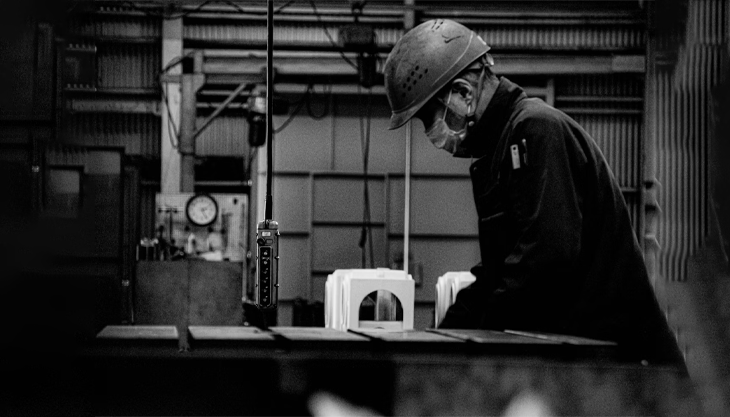


Industrial jobs are unsafe, and it`s not a hidden secret. Workers need to be appropriately dressed up in attire that provides safety and comfort at the same time. Traditionally safety attires have been good at giving protection, but convenience has been mainly missing.
Brunt has developed the newest idea of creating safety attires that secures a worker from anticipated dangers and gives a comfortable feel.
To make workplaces safer for those who must carry out their responsibilities in challenging industrial environments is crucial to assess workplace risks and establish safety measures. Engineering safety procedures cannot eliminate all industrial dangers. When mechanical safety fails or becomes insufficient, essential safety clothing like coveralls, high-visibility jackets, shop coats, etc., can assist in raising safety standards.
What Is Safety Attire?
Any gear that protects our personnel from harm while assisting them in doing their tasks more effectively is called safety apparel. Steal-toe cap boots are therefore chosen if we follow the example of kitchen footwear above. If chefs had protective footwear, they wouldn`t sustain significant harm if they dropped a knife on the floor and it struck their feet.
It is crucial in the workplace since it safeguards users from health and safety dangers. It is also known as PPE (Personal Protective Equipment), and it promotes a secure, enjoyable working environment for everyone by reducing the risk of accident, sickness, and legal concerns.
There are innumerable instances of what safety gear in the workplace entails. We can all find the most recent examples in the PPE (Personal Protective Equipment) industry. We are all aware of the global mask and disposal apron shortages in the UK in 2020. In the absence of PPE and safety equipment,
Why Do Employees Need Safety Gear?
Suppose an employee gets hurt and isn`t adequately outfitted while performing their job. They could even sue the company if it doesn`t provide them with the gear since it puts them in danger of dying or hurting themselves.
The UK government was sued for failing to provide lifesaving equipment because of the absence of PPE at the beginning of COVID-19. The government awarded the PPE contract to a Sussex company with only 16 people, far less than the required manufacturing level to outfit the whole NHS.
When determining if staff members need safety apparel, you should also consider the time and expense of your business. It would be worse for your business than just covering the apparel cost if they got hurt and had to miss a lot of time at work.
You have a duty of care to make sure that employees are as safe and secure as possible while they are under your employment. Health and Safety International Magazine asserts that there is another justification for protecting employees. They aren`t working as well as they may be if they perform a dangerous task while just partially paying attention to their safety.
Essential Safety Gear:
Headwear
Staff members are protected from head injuries caused by falling items by wearing helmets and hard hats. A knit hat or winter liners can be used beneath helmets during the cooler winter months. Beanies should be tightly fitting and not obstruct the helmet`s ability to properly fit and shield the wearer`s head.
Face And Eye Shields
Safety goggles, a face mask, or a respirator should be given for occupations in manufacturing and construction to stop soil, dust, or fumes from getting into the eyes or lungs. Employers must ensure that workers periodically change the filters on the proper respirator, which must be given to all employees. Because they have no taste or smell, some gases, like carbon monoxide, are deadly. When shopping for a carbon monoxide respirator, getting the right tools is crucial to protect personnel from potential risks or pollutants.
Wearing Protective Gear
In some workplaces, protective gear is needed to safeguard the security of employees and clients. As an illustration, consider the food handling industry. However, clothing is also necessary in many other fields, such as security guard work at entrances. While food workers must have their hair pulled back and their hands covered when handling food, security guards must wear high-visibility jackets to be visible and let passers-by know they are there in case someone needs assistance.
A Hearing Shield
In offices, loud noises might potentially pose a health risk. Hearing protection is crucial on construction sites but also in factories, where hearing loss is a common complaint. Worker exposure to loud noises can occur in various occupations, including carpentry, farming, and even dentistry work. Earmuffs or earplugs might be helpful for football coaches as well. According to the Control of Noise at Work Regulations 2005, hearing protection should be considered by employers at levels of 80 dB(A) and is necessary if employees are exposed to an average of 85 dB(A) each day or week.
According to the Control of Noise at Work Regulations 2005, hearing protection should be considered by employers at levels of 80 dB(A) and is necessary if employees are exposed to an average of 85 dB(A) each day or week.
Workwear and personal protective equipment (PPE) are created to ensure workplace employee safety. Protecting delicate parts, including the eyes, head, ears, and face, requires considering various factors. If companies don`t offer enough safety measures, not only is there a greater danger of injuries, but they also risk being held liable for any accidents that do occur.